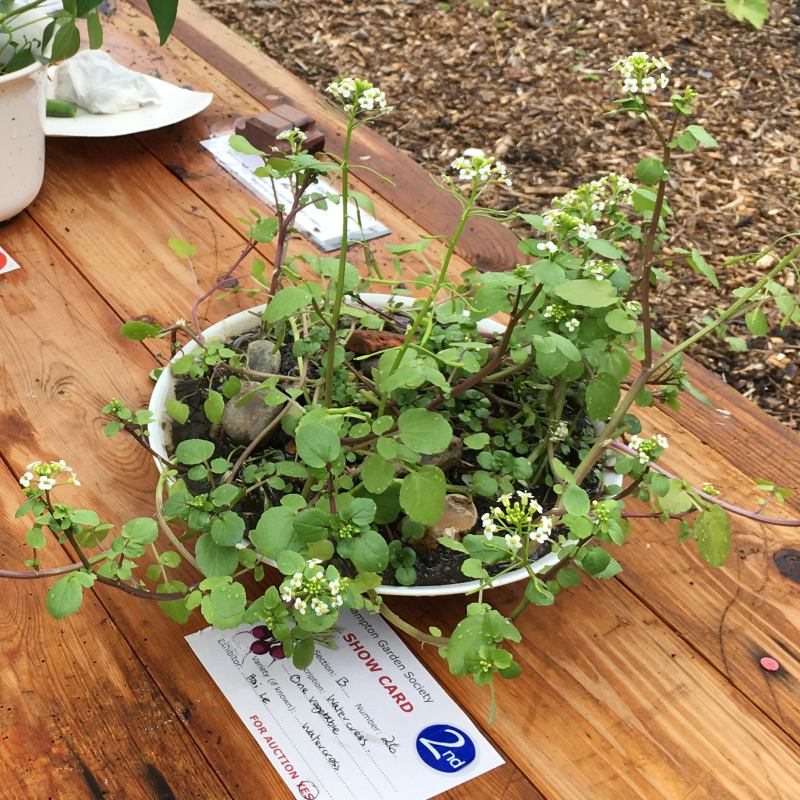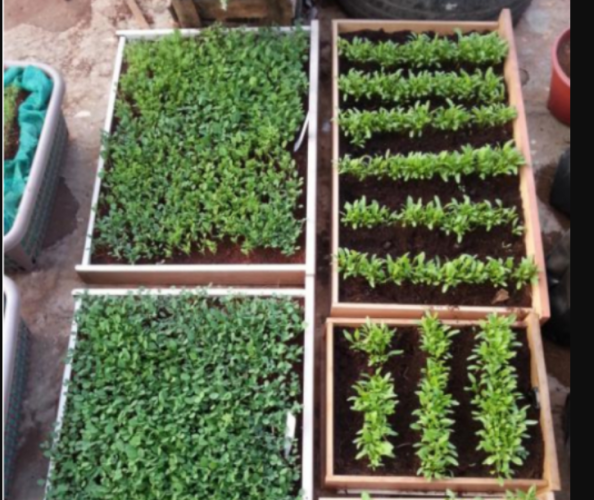The RGS Shows often host surprising exhibits, and this year an entry of watercress piqued my interest.

The peppery leaves of watercress (related to nasturtium, mustard cress, radish and wasabi) cheer up many a summer salad – and it seems you don’t need a pond or stream to grow them successfully. The show entry was presented in a bowl containing gravel/compost, held down by stones, and filled with water.

You can grow from seed or cuttings – indeed some of the organic watercress in the supermarket has the odd root on it. Seeds will be best for the ‘microgreens’ approach – just keep the seed tray very moist- a watering tray topped up is a good idea. All microgreens are full of vitamins and minerals and very good for your health.
Growing watercress in containers is a safer option than growing it in water – commercial growers know how to keep the water fresh and bacteria-free, but this is much harder to do in a garden situation. To prevent any stagnation, make sure to flush the pots through twice a week with fresh water. Mixing charcoal with the compost will also help to keep things fresh.
The key is consistent moisture and not too much sun – but watch out for those snails!
Lots of advice online – but here’s a starter for you
https://www.thompson-morgan.com/how-to-grow-watercress
https://forestry.com/guides/how-to-grow-watercress-comprehensive-guide-from-seed-to-harvest/

